Coloring isn’t just for kids; it’s a stress-relieving activity that has gained popularity among adults, offering a creative outlet and a way to unwind from the hectic pace of modern life. Filling in our adult flower coloring pages, in particular, has blossomed into a beloved pastime, allowing individuals to immerse themselves in the intricate beauty of nature while engaging in a meditative and artistic endeavor. Whether you’re a seasoned artist or picking up colored pencils for the first time since childhood, coloring adult-level flowers offers a delightful and therapeutic way to connect with your inner creativity and bring a little more color into your life.

Feel encouraged to choose the design that resonates with you the most, download the free PDF template, print it out, and delight in coloring to your heart’s content.
Additionally, these designs can serve as patterns for embroidery or provide inspiration for intricate line tattoos.
Floral facts
If you’re exploring my coloring pages for the first time, I want you to know that I offer the opportunity to learn about the subject matter.
This way, you can effortlessly transform your coloring session into an educational experience…so let’s dive in!
Flowers are not just beautiful; they are fascinating and full of surprises.
Here are lots of fun and interesting facts about flowers that highlight their diversity, importance, and the intriguing roles they play in nature and culture:
- World’s Smallest Flower: The world’s tiniest flower comes from the Wolffia genus, commonly referred to as watermeal. These minuscule flowers measure less than 1 millimeter in diameter, making them nearly as small as a grain of sand, or for a more precise measurement, less than 0.039 inches.
- Largest Flower: The Rafflesia arnoldii is known for producing the largest single flower on the planet. This gigantic bloom can reach up to 3 feet (about 91 centimeters) across in diameter and weigh as much as 15 pounds (approximately 6.8 kilograms).
- Flowers That Trick Insects: Some orchids produce flowers that mimic the appearance and scent of female insects to attract males for pollination purposes.
- Ancient Blooms: Scientists have discovered fossilized flower fragments that date back over 100 million years, indicating flowers have been around since the dinosaurs.
- Edible Flowers: Many flowers are edible and used in cuisines worldwide. Examples include lavender, nasturtium, viola, and rose.
- Flower Clocks: Carl Linnaeus, the Swedish botanist, devised a floral clock using flowers that open and close at specific times, allowing the time of day to be estimated.
- Sunflowers Follow the Sun: Young sunflower blooms, known as heliotropes, follow the sun from east to west as it moves across the sky, a phenomenon known as heliotropism.
- The Color Blue: Very few flowers are naturally blue because blue pigment (delphinidin) is rare in the plant kingdom. Examples of blue flowers include delphiniums and hydrangeas.
- Tulip Mania: In the 17th century, tulips became so highly prized in the Netherlands that their bulbs were worth more than gold, leading to the world’s first economic bubble known as “Tulip Mania.”
- Flowers That Bloom at Night: Some flowers, like the moonflower and night-blooming jasmine, open only at night to attract specific pollinators like moths.
- Symbolism and Meaning: Different cultures attribute various meanings and symbolism to flowers. For instance, red roses symbolize love and passion, while white lilies represent purity and renewal.
- The Corpse Flower: The titan arum, also known as the “corpse flower,” emits a strong odor of decaying flesh to attract pollinators like flies and beetles.
- Oxygen Providers: Besides beauty, flowers play a crucial role in producing oxygen. Through photosynthesis, they convert carbon dioxide into oxygen, contributing to the air we breathe.
- Medicinal Properties: Many flowers possess medicinal properties and are used in traditional and modern medicine. For example, calendula has healing qualities, and chamomile can soothe anxiety.
- Flowers in Space: The first flower grown in space was a zinnia, cultivated aboard the International Space Station in 2016, demonstrating the potential for growing plants in extraterrestrial environments.
These facts showcase the remarkable diversity and the myriad of roles flowers play in ecosystems, human culture, and beyond, making them an endless source of fascination and inspiration.
We definitely learned a lot about flowers, but there is much more to know.
If you would like to continue on your quest for floral-filled knowledge, here are some other reputable resources to learn about flowers:
- https://en.wikipedia.org/wiki/Flower
- https://www.britannica.com/science/flower
- https://www.amnh.org/learn-teach/curriculum-collections/biodiversity-counts/plant-identification/plant-morphology/parts-of-a-flower
- https://www.youtube.com/watch?v=xdaRvErv2Kc
- https://www.nationalgeographic.com/science/article/big-bloom
- To see all of my free printables, go here.
- To see an alphabetized index of my coloring pages, go here.
- To see all of my botanicals coloring pages, go here.
- To see all of my floral coloring pages, go here.
Coloring tips
Coloring intricate floral designs can be a deeply satisfying and therapeutic activity.
Here are some tips and tricks to help you get the most out of your coloring experience:
- Choose the Right Tools: High-quality colored pencils, fine-tip markers, or gel pens are ideal for detailed work. Each tool offers a different texture and coverage, so experiment to find what suits you best.
- Start with Light Layers: Begin with light pressure to lay down a base color. You can always add more layers to intensify the color or create depth.
- Embrace Gradient Shades: Use light and dark shades of the same color to add dimension to your flowers. Coloring lightly at the tip of a petal and gradually applying more pressure towards the base can create a natural gradient effect.
- Mix Colors: Don’t be afraid to blend colors directly on the page or by layering to achieve new hues and depths. Colored pencils can be blended with a blending pencil, a cotton swab, or even your finger to smooth out transitions.
- Use a Colorless Blender: A colorless blender pencil is a great tool for smoothing out strokes and blending colors seamlessly, especially useful for intricate designs.
- Add Highlights and Shadows: Identify a light source and add highlights and shadows accordingly. Leaving certain areas lighter can mimic the effect of light hitting the design, while darker shades can add depth and volume.
- Incorporate Fine Details: Use a fine-tip pen or sharp pencil point for tiny areas to add crisp details or accentuate certain elements of the design.
- Take Your Time: Intricate designs require patience. Don’t rush. Enjoy the process as a meditative activity.
- Practice Good Posture: Keep your workspace well-lit and maintain a comfortable posture to avoid strain, especially during longer coloring sessions.
- Experiment with Backgrounds: Adding a background color or design can make your floral designs pop. Consider a contrasting color to make the flowers stand out or a gradient for a dynamic effect.
- Stay Inspired: Look at real flowers for inspiration on colors and shading. Nature is the best teacher when it comes to understanding how light and color work together.
- Keep a Scrap Paper Handy: Before applying color to your design, test it on a scrap piece of paper to ensure it’s the shade and intensity you want.
Remember, there’s no right or wrong way to color.
The most important tip is to relax and enjoy the creative process.
Your floral designs are a reflection of your unique artistic journey.
Options For Printing:
Various flower designs
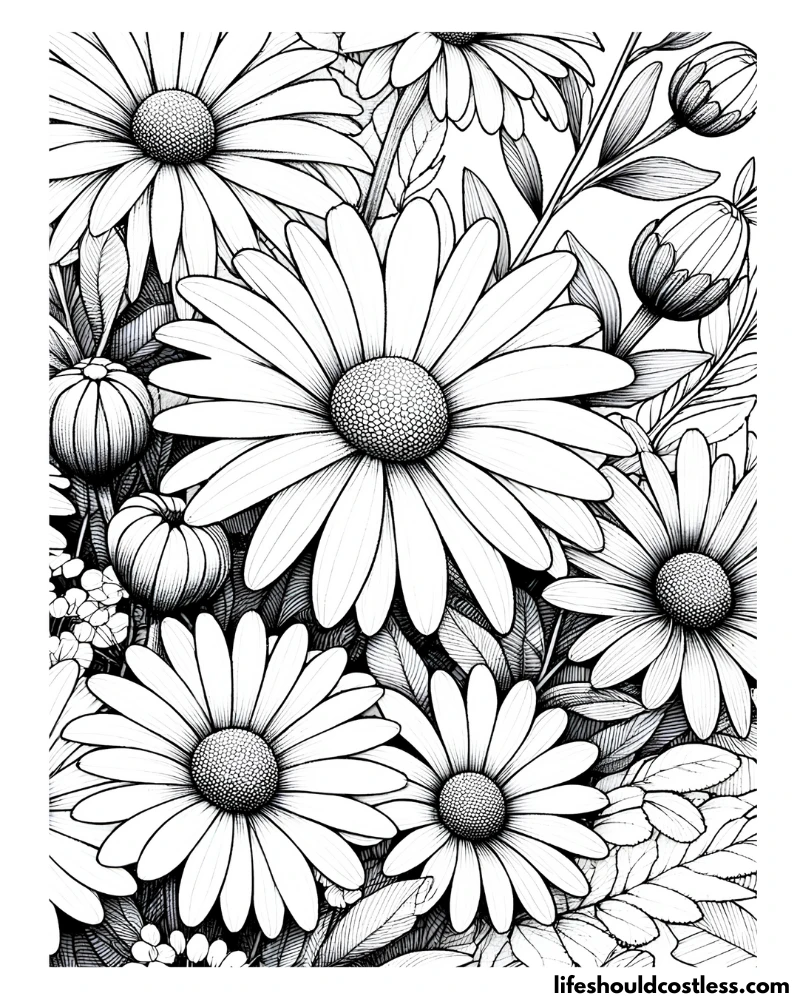
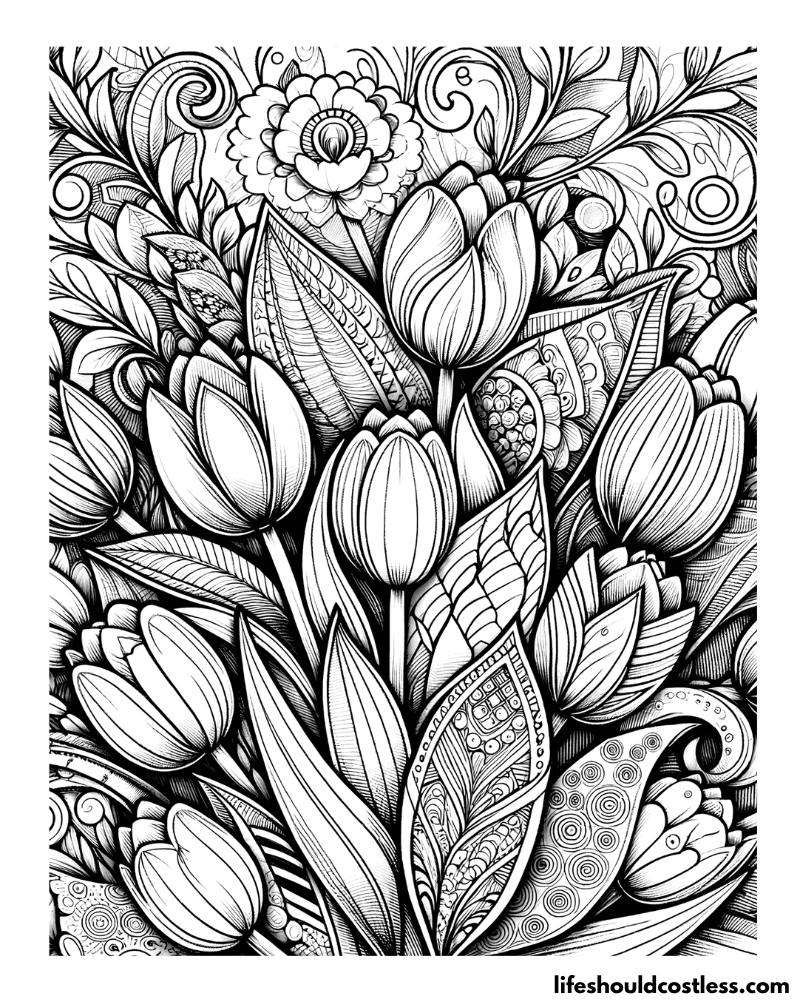
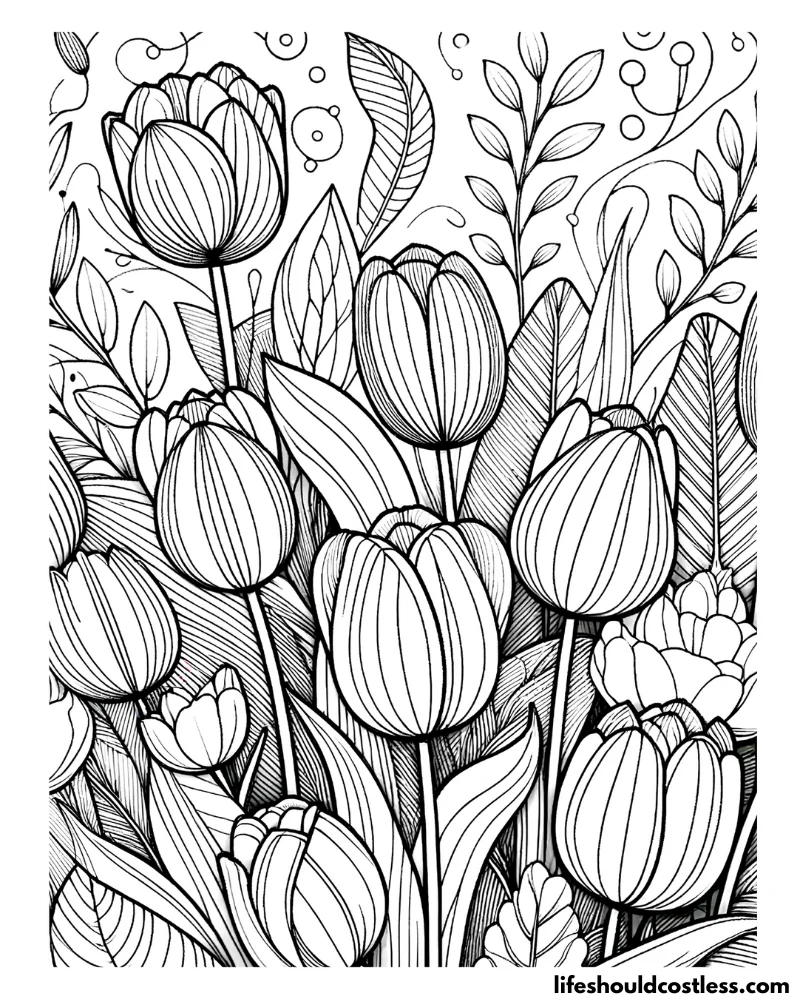
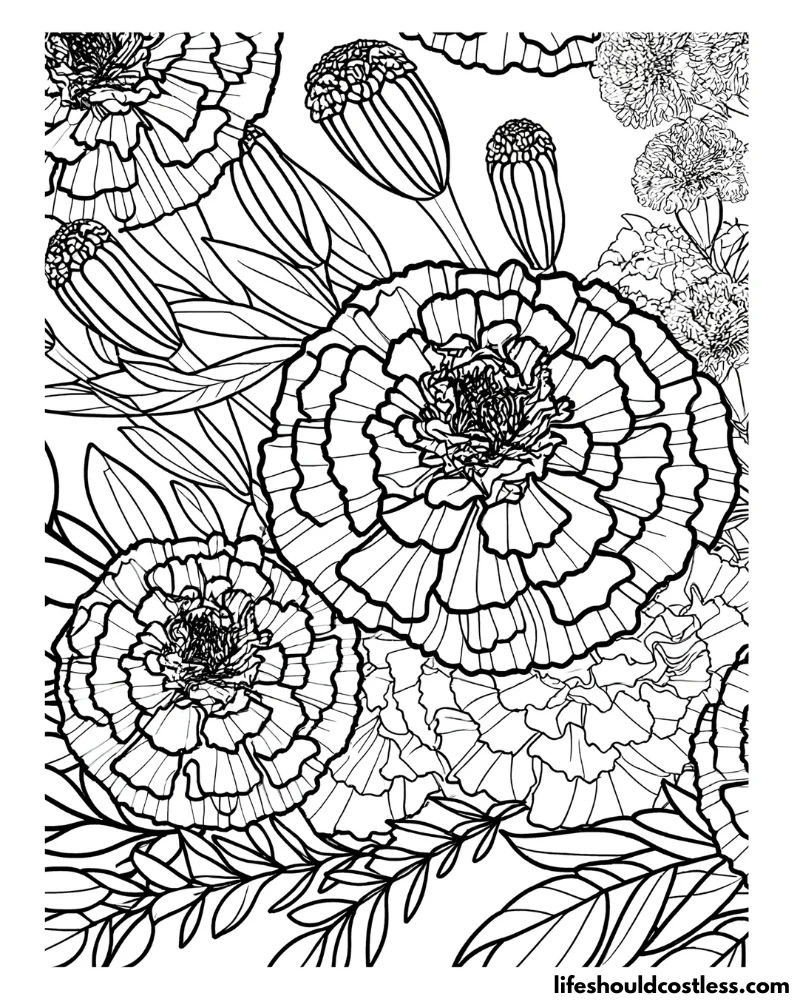
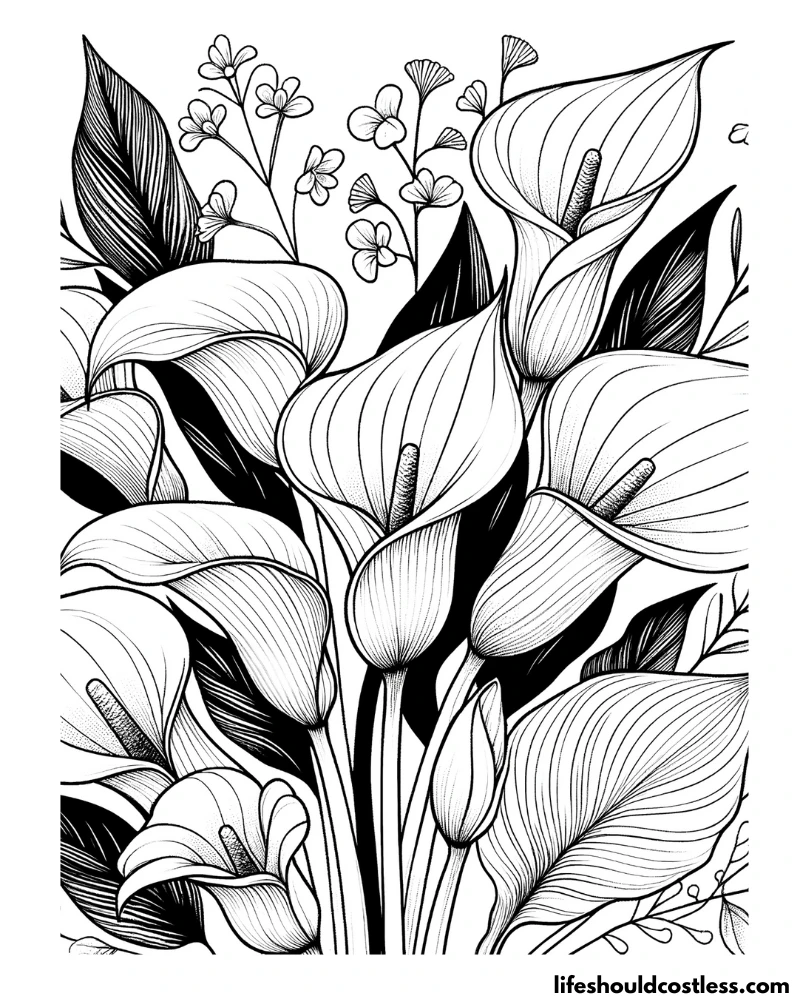

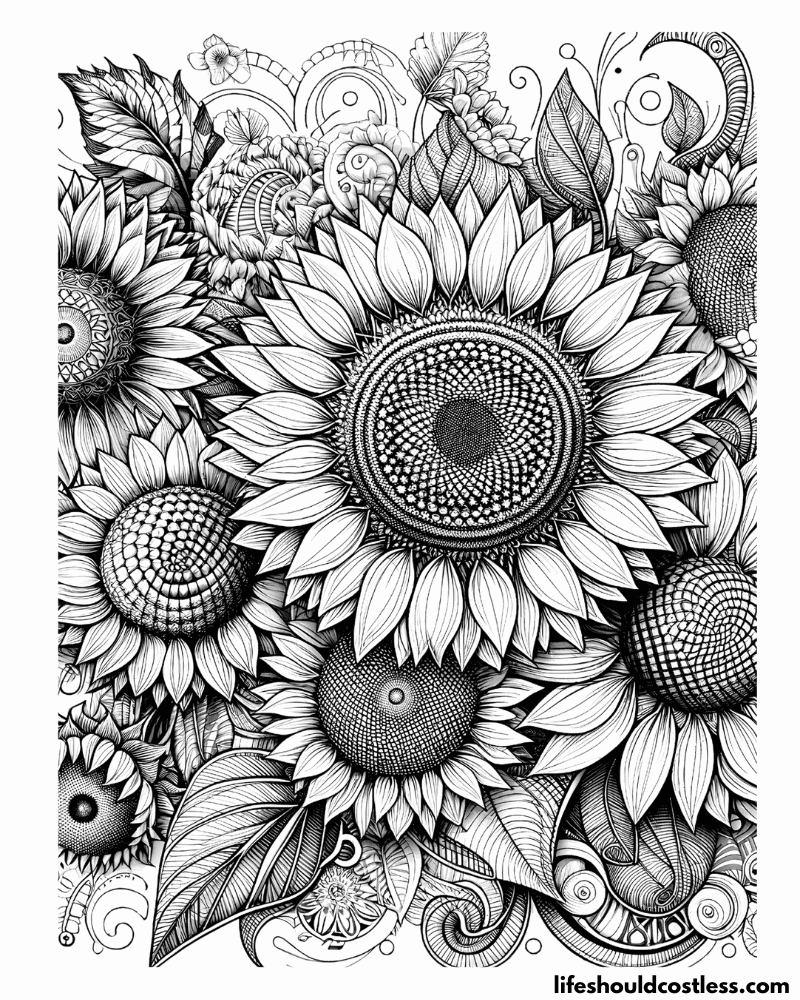

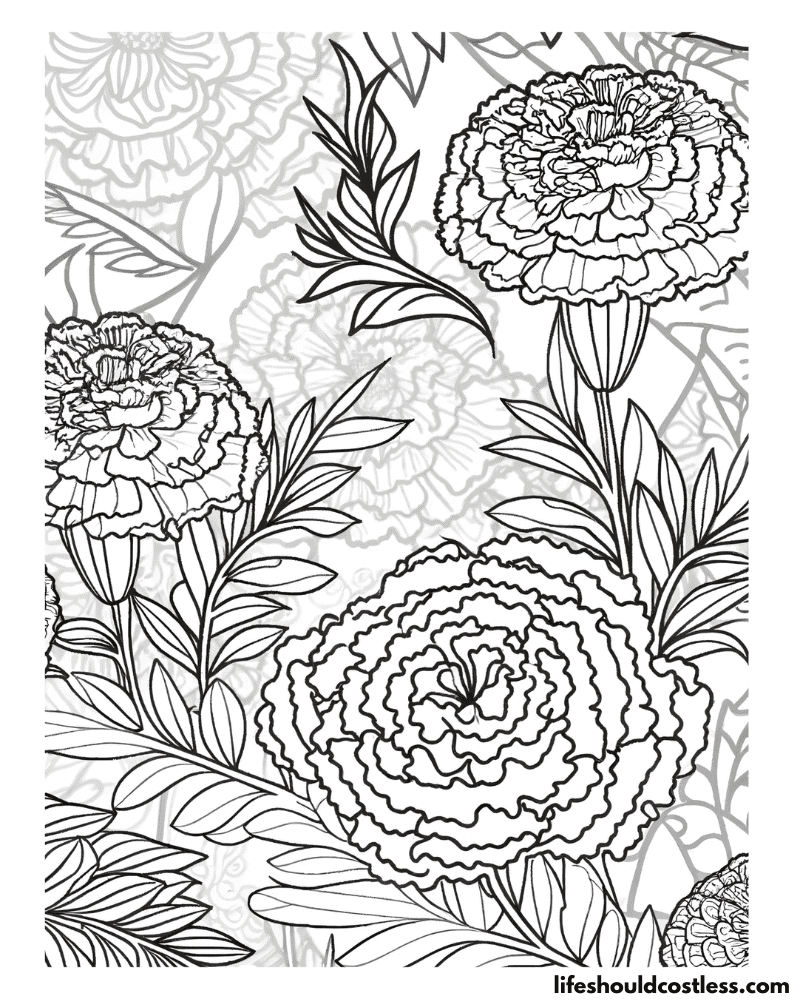


FAQ’s
The most common colors of flowers include:
Red
Yellow
Pink
White
Blue
Purple
Orange
*I will add more flower colour / color questions and answers as the questions get sent to me.
Conclusion
In conclusion, our adult flower coloring pages offer a unique blend of creativity, tranquility, and educational value, making them a cherished activity for individuals looking to de-stress and engage with art.
These pages provide an accessible way to explore your artistic talents and learn about the fascinating world of flora.
By incorporating coloring into your routine, you not only enhance your knowledge of flower varieties and colors but also cultivate a sense of mindfulness and relaxation.
So, pick up your colored pencils, embrace the diverse beauty of these botanical designs, and let the vibrant world of flowers inspire your next artistic journey.
Whether you’re coloring for pleasure, using the imagess for craft projects, or seeking inspiration for more permanent art forms, coloring adult-level floral designs is a testament to the enduring beauty of nature and the endless possibilities of your imagination.
Thanks so much for stopping by my blog and supporting my endeavors to make people’s lives a little easier/better/more affordable.
If you liked this post, or found it helpful in any way, please make sure to share it with your family, friends, and co-workers via social media.
Or you could even send them the direct link via email. Whichever way you choose to spread the love, I super appreciate it! ~Sarah
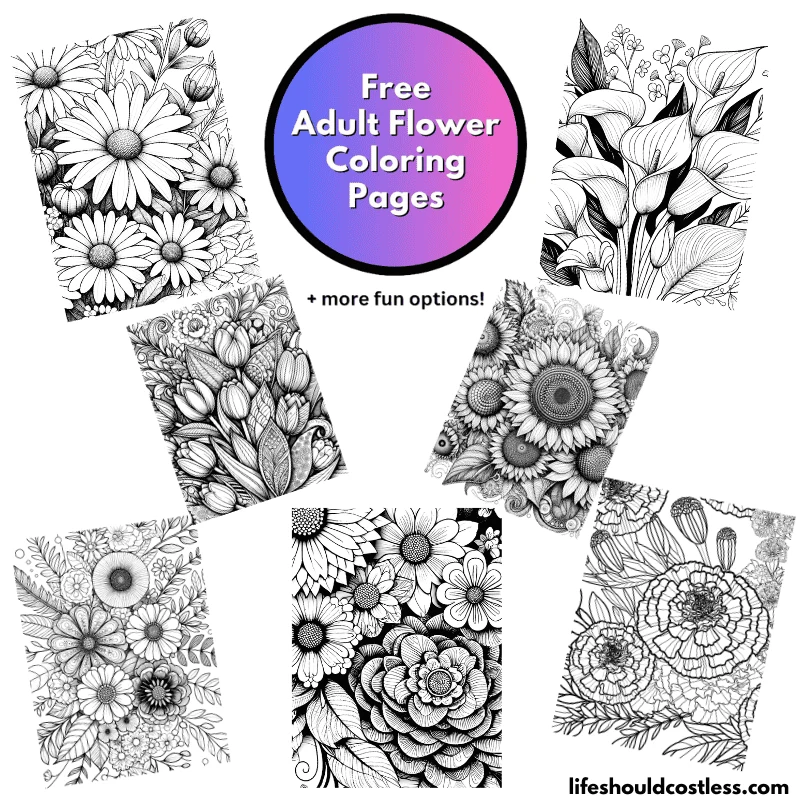
How To Follow & Support This Site
- If you would like to subscribe to my email list, go here.
- Make sure to follow along via social media, by going here.
- If you would like to learn how to really show your support to this site (at no cost to you), go here.
- If you would like to make a direct donation to the site, go here.
Check out my other free printables
- To see all of my free printables, go here.
- To see an alphabetized index of my coloring pages, go here.
- To see all of my botanicals coloring pages, go here.
- To see all of my floral coloring pages, go here.
Otherwise, here are direct links to several of my other related posts that you’re also going to love:
Botanicals / Floral & Misc
Botanicals / Fruits
Other good resources for printable flower pictures to color
- https://www.bestcoloringpagesforkids.com/flower-coloring-pages-adults.html
- https://www.muminthemadhouse.com/free-flower-colouring-page-for-adults/
*This post was originally shared to this blog on 02/20/2024, and has since been updated to improve user experience, possibly add video instruction, as well as to make it as shareable as possible across the social medias.
**Please note that I do try my hardest to provide factual, but easy to understand, information about each topic. If you notice a discrepancy in my coloring pages, facts, or see something that you deem “misinformation/incorrect” please make sure to notify me about it. I would prefer that you send me an email with a link to a more reputable resource on that subject, so that I can correct it as soon as possible. Thanks so much for helping this site become the best that it can be!
***Resources from djinkers were used in the production of this article.
